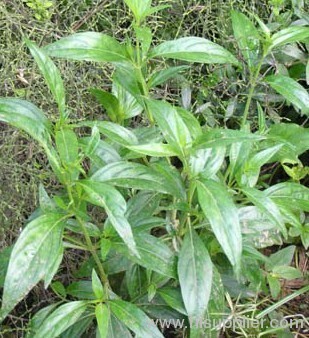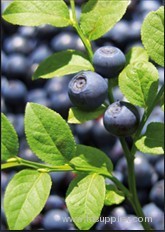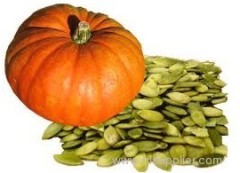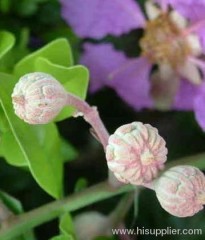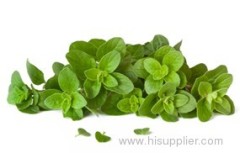
|
KINGHERBS LIMITED
|
China Belladonna Extract
| Payment Terms: | T/T,L/C |
| Place of Origin: | Hunan, China (Mainland) |
|
|
|
| Add to My Favorites | |
| HiSupplier Escrow |
Product Detail
China Belladonna Extract
Latin Name: Atropa belladonna L.
Synonym: Black Cherry; Deadly Nightshade
Used Part: Whole herb
Activity Ingredient: Total Alkaloid (hyoscyamine, Atropine). Belladonna alkaloids are tropane derivatives, alcohol from the Belladonna (C3α-OH) class of organic acids and aromatic esters by ester bond alkaloid, organic acid component is Belladonna acid and hydroxy acids.
Hyoscyamine:
Molecular Formula: C17H23NO3
Molecular Weight: 289.37
CAS#: 101-31-5
Synonym: Black Cherry; Deadly Nightshade
Used Part: Whole herb
Activity Ingredient: Total Alkaloid (hyoscyamine, Atropine). Belladonna alkaloids are tropane derivatives, alcohol from the Belladonna (C3α-OH) class of organic acids and aromatic esters by ester bond alkaloid, organic acid component is Belladonna acid and hydroxy acids.
Hyoscyamine:
Molecular Formula: C17H23NO3
Molecular Weight: 289.37
CAS#: 101-31-5
Specification:
Belladonna Liquid Extract: Hyoscyamine 1.5%,brown liquid
Belladonna Extract: Hyoscyamine 1.5%~2.5%, fine light brown powder.
Belladonna Liquid Extract: Hyoscyamine 1.5%,brown liquid
Belladonna Extract: Hyoscyamine 1.5%~2.5%, fine light brown powder.
Description: Belladonna, commonly known as Atropa belladonna or Atropa bella-donna, Devil's Berries, Death Cherries or Deadly Nightshade, is a perennial herbaceous plant in the family Solanaceae, native to Europe, North Africa, and Western Asia. The foliage and berries are extremely toxic, containing tropane alkaloids. These toxins include scopolamine and hyoscyamine which cause a bizarre delirium and hallucinations, and are also used as pharmaceutical anticholinergics. The drug atropine is derived from the plant.
It has a long history of use as a medicine, cosmetic, and poison. Before the Middle Ages, it was used as an anesthetic for surgery; the ancient Romans used it as a poison (the wife of Emperor Augustus and the wife of Claudius both used it to murder contemporaries); and predating this, it was used to make poison tipped arrows. The genus name "atropa" comes from Atropos, one of the three Fates in Greek mythology, and the name "bella donna" is derived from Italian and means "beautiful woman".
It has a long history of use as a medicine, cosmetic, and poison. Before the Middle Ages, it was used as an anesthetic for surgery; the ancient Romans used it as a poison (the wife of Emperor Augustus and the wife of Claudius both used it to murder contemporaries); and predating this, it was used to make poison tipped arrows. The genus name "atropa" comes from Atropos, one of the three Fates in Greek mythology, and the name "bella donna" is derived from Italian and means "beautiful woman".
Medicinal Use:
1. Anti-alkali for the gallbladder;
2. Prevent from excreting of the gland;
3. Cure the gastric and duodenum ulcer;
4. Relieve the convulsion of stomach and the intestine, as well as the angina of kidney and gallbladder.
1. Anti-alkali for the gallbladder;
2. Prevent from excreting of the gland;
3. Cure the gastric and duodenum ulcer;
4. Relieve the convulsion of stomach and the intestine, as well as the angina of kidney and gallbladder.
Special Cautions:
Due to its effects on the brain and central nervous system, Belladonna can cause muscular tremor or rigidity. A variety of side effects--many of them dangerous--appear after an excessive dose (see "Overdosage" below).
Due to its effects on the brain and central nervous system, Belladonna can cause muscular tremor or rigidity. A variety of side effects--many of them dangerous--appear after an excessive dose (see "Overdosage" below).
Possible Drug Interactions:
Belladonna can increase the side effects of the following drugs:
Amantadine (Symmetrel);Quinidine (Quinaglute, Quinidex);Tricyclic antidepressant medications such as Elavil, Pamelor, and Tofranil.
Special Information If You Are Pregnant or Breastfeeding.No harmful effects are known.
Belladonna can increase the side effects of the following drugs:
Amantadine (Symmetrel);Quinidine (Quinaglute, Quinidex);Tricyclic antidepressant medications such as Elavil, Pamelor, and Tofranil.
Special Information If You Are Pregnant or Breastfeeding.No harmful effects are known.
How To Prepare:
Belladonna leaves and flowering branch tips are collected in the wild from May to July. The roots of 2- to 4-year-old plants are dug up in mid-October to mid-November or shortly before the start of the flowering season. The dried plant material is available in powder and extract form.
Belladonna leaves and flowering branch tips are collected in the wild from May to July. The roots of 2- to 4-year-old plants are dug up in mid-October to mid-November or shortly before the start of the flowering season. The dried plant material is available in powder and extract form.
Typical Dosage:
Belladonna powder
The average single dose is 0.05 to 0.1 gram. The maximum dose is 0.2 gram. Take no more than 0.6 gram a day.
Belladonna powder
The average single dose is 0.05 to 0.1 gram. The maximum dose is 0.2 gram. Take no more than 0.6 gram a day.
Packing Detail : Packed in paper-drums and two plastic-bags inside. Net Weight: 25kgs/drum.
Shelf Life : two years under well Storage situation and stored away from direct sun light.
Shelf Life : two years under well Storage situation and stored away from direct sun light.

